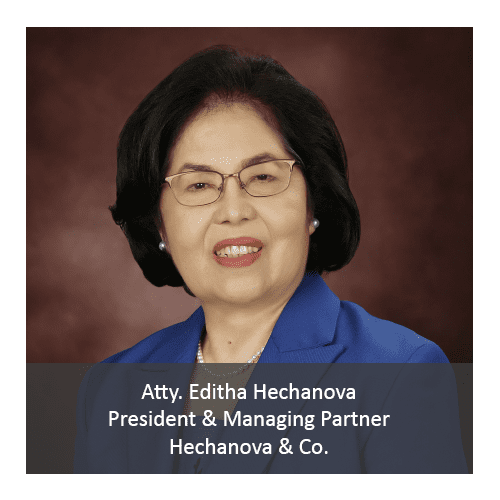PH had 2nd biggest share of female applicants for international patents among 74 countries in 2021
16 March 2022

The Philippines had the second biggest share of female inventors among its pool of applicants for international patents in 2021, according to data by the World Intellectual Property Organization. Women inventors in the Philippines accounted for 38% of the total number of international patent applicants from the country in 2021.
Leading the pack of 74 countries ranked was Cuba where female international patent applicants accounted for 53% of the total number. In third position was Portugal where 34% of applicants were women. The global average was 17%
“The Philippines has a population of about 110 million and 55.6% are men and 54.6% are women. However, based on the World Population Review, Filipino women in the age bracket of 48 to 100 years, which are perhaps the more productive years, comprised 51.6% as compared to Filipino men at 48.4%,” said Editha Hechanova, president and CEO of Hechanova and Co. Inc. and managing partner of Hechanova, Bugay, Vilchez & Andaya-Racadio in Manila.
Education is another factor, Hechanova added, citing some statistics.
According to a survey conducted by the Philippines Statistics Authority, 13.7% of college graduates are Filipino women while 9.8% are men.
Statista Research Department also conducted a study in 2021. It found that in 2017, there were approximately 1.32 females per one male in tertiary education enrollment in the Philippines. Tertiary level education in the Philippines is composed of colleges offering one or more specialized programs and universities with eight undergraduate degree programs.
“The surveys also illustrated that Filipino women tend to engage themselves in the study of business administration and related studies, education science and teacher training and in medical and allied fields. Engaging in these fields may hone a person’s interest in the field of inventing,” said Hechanova, “as they are more exposed to see the everyday needs and beyond, of humankind.”
Does she think the Philippines will continue to be at the top of the rankings for jurisdictions with the biggest share of women among its total number of international patent applicants?

Hechanova believes so and hopes that the country will eventually reach the number one position.
“There are many interventions that would support this such as the IPOPHL’s Patent Cooperation Treaty (PCT) Filing Assistance Program which waives certain application fees and provides assistance to inventors thru the PCT Phase. Recognition given to women inventors also helps. The IPOPHL has an IP Magazine focusing on women who are innovators and there are a number of business organizations comprising of women, and they help one another,” she said.
What qualities do women have that make them valuable inventors and patent right owners?
“I think the creative and inventive mind is not a function of gender. But the environment and culture do affect the role of women in a society,” explained Hechanova. “Perhaps the men would disagree, but the Philippines is a matriarchal society with many women occupying dominant positions in families, businesses and even politics. We have had two female presidents: Corazon Aquino and Gloria Macapagal-Arroyo. The concept of gender equality has always been there even during the pre-Hispanic times. The fact that Filipino women are caring and family-oriented make them valuable as inventors since their creations would always be something not only revenue generating, but useful and be of help to everyone young or old, male or female.”
Hechanova added that a shift to a “patent first then publish” mentality by focusing incentives to this direction is critical to encourage more women scientists and inventors in the Philippines to seek patent protection. Most inventors come from the academe with a “publish or perish” mindset.
“A shift to a ‘patent first then publish’ mentality by focusing incentives to this direction - both monetary and career or teaching credits - would I think go a long way. Scholarships and funding for schools and higher education would certainly help, but child care support to assist the Filipina scientist, who is also a mother, balance her job as a scientist and her responsibilities as wife and mother would also be of help.”
Child care support may come in the form of training opportunities for men to be more aware of housekeeping and child-rearing obligations, according to Hechanova.
Spanish-speaking countries such as Spain, Chile, Costa Rica and Peru figured strongly in the top 10 of the rankings.
In 15h spot was China with 24% of its international patent applicants in 2021 being female.
Espie Angelica A. de Leon






